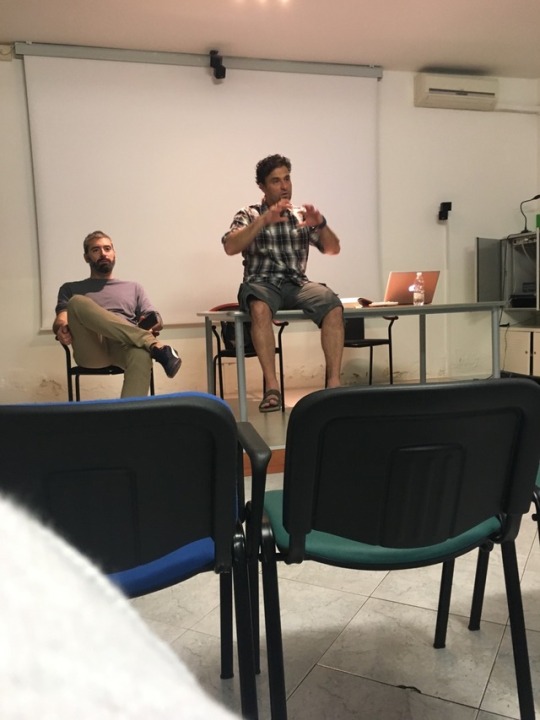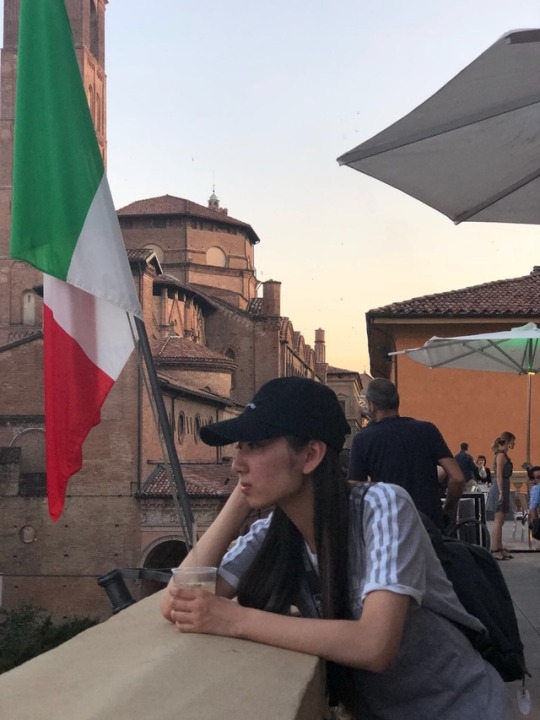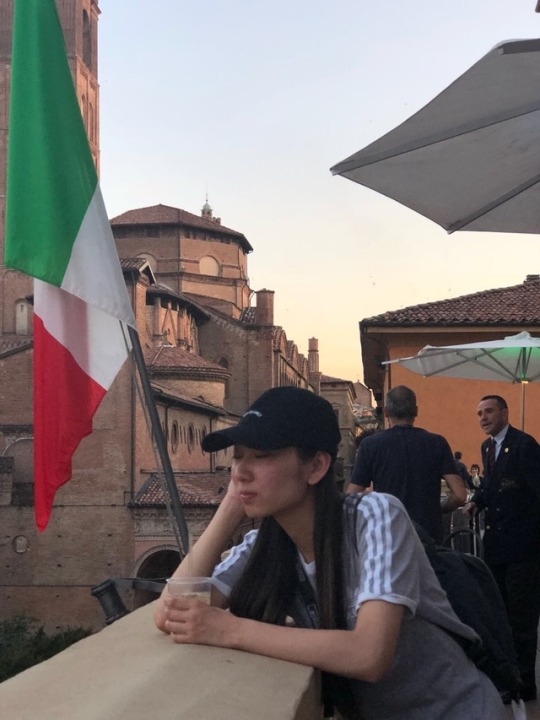Photo

OUR LAST MEAL TOGETHER!
A RIVER THERE CI
Pic: Wenwen Qiu
2 notes
·
View notes
Photo

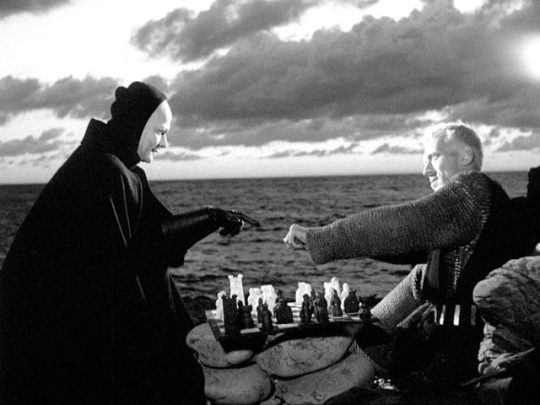

Fare Thee Well (Dink’s Song)
So this will be my Final Long Post. No Ifs ands or Buts. I’ve wrote 8-9 of these suckers at this point (shame those other ones didn’t count but ya know you gotta write about film in the film program *color me shocked) but here is my last one.
I’d like to do an overall review of this program and the Film Festival. I haven’t been this happy in a long time and I’m sad to leave. I’m really gonna miss Italy. Alex talked about how when you go to a film festival you feel like you’re home that is exactly how I felt. Home.
I’m gonna have this be an extra long post (when had that stopped me from going over 3k characters before) so I can fulfill my obligation of talking about film whilst I talk about the program as well.
So a brief overview:
We started off viewing a few Italian Neorealist films (Rome Open City, Momma Roma) and being given readings to help us better understand the films. Many of the readings were great if you could sit down and get into them. When you’re in Italy it's very hard to do that when you want to explore. They could also be quite dry. I’m more of a spark notes kind of guy tbh; I’m impatient.
For those going into the program in the future do the readings before you come if you have the chance. It will give you time to process the information and more time to explore Italy.
Then we watched 4 Months, 3 weeks, and 2 days by Cristian Mungiu a notable Romanian filmmaker who we would later meet and watch said film a second time. I don’t think any of us asked any questions of him - either because some of us chickened out and others of us had no questions (I thought the film was clear to me and he’d explained enough).
I don’t happen to have the syllabus on me at the moment but if I recall correctly right before the film festival started we went to Turin’s National Cinema Museum. It was a sight to behold. The view uptop was great but the real treasure was what laid inside the building. Film peraphinalia from a myriad of different famous films.
They had several exhibits where you could see how sound affects a scene with the option to change the music and notice a tonal and/or mood change. Sound as we’ve been taught has a huge effect on the overall experience. Telling you what to think and feel.
They also had an exhibit that was a first person virtual reality but you had to work it with your hands on a screen to look around 360 degrees. However my favorite one, because it got Anna dancing, was one that played different music to a beat and created a missenscene using lights.
The props were cool too stuff from the old horror Frankenstein days, Aliens, Jaws, etc. All films near and dear to my heart. Even films I wasn’t too familiar with it was still a pleasure to see the love and passion to maintain the films legacy for generations to come.
Then the film festival happened. It was essentially as I stated on one of my posts. We all watched at least 3 films a day (or went to events) that Alex and Donato had selected from the overall list. A greatest hits list so to speak; apparently so good the grad students started following ours.
There were a wide variety of films on offer - Mexican, French, Italian (of course), Japanese, Chinese, American, etc. A little bit of flavor for everyone. Truly the spice of life.
We gotta chance to have an audience with Martin Scorsese. Who spoke to the auditorium about his life, what he did to get where he was now, what he thought of filmmaking, where it was going, and how it needs to be preserved for future generations.
Martin Scorsese I believe is one of the greatest filmmakers of his time. He looked frail; age sadly is catching up to this great so I’m humble and happy I got to have that experience. Not many people can say they have.
I talked of the other highlights for me in my other reviews. However I didn’t speak of a particular actor who caught my eye at the festival. Marcello Mastroianni who appeared in a couple films that had elements of dark comedies (up my alley). They had 8 ½, Divorce Italian Style, and Il bell'Antonio.
I never was aware of this actor, but now that I am; I’m checking out more of his filmography and loving it. The films were an experience and it was nice to hear them talk (when it was translated) about how they made it or other fun anecdotes.
The best way to experience cinema is to see it in theatres with other people who share your passion and enjoyment of the medium. The restorations offered were varied and they did justice in their restoration to make it as much like the original releases. The SU Program offered so much it's really hard to do it justice in one post.
A restored film from Mexico (1940s) was shown that acted as a rom com. (it was very serious at first but then changed to a comedy imo to catch you off guard). People in our group had a crush on the main protagonist after - which I got a kick out of.
The most thought provoking film I believe we saw at the festival was the Swedish Seventh Seal in which a knight returns from the crusades and plays a game of chess with death. Obviously I’m selling it short but I can tell you it asks many philosophical questions and has moments of darkness and levity. Worth a watch.
It was truly an experience and I got to meet people from around the world (people from Belgium, Africa, France, Italy, England, even West Coast Counterparts). They all loved cinema and had their own or similar experiences we could bond over. It was nice talking to people who I felt understood me and shared the passion.
Once the festival was over we got to go to the lab where they restored everything and saw all the work that went into what we got to view (taking it for granted tisk tisk). It really makes you appreciate all the time and effort that goes into these endeavors. I also took away some useful information to preserve your film the best way is film.
The whole festival is something I’d love to do again. Certainly makes me think I need to get out there more. Now I just need more film buddies to go to these things with…
After the festival we didn’t stop we continued to watch more films and learn about what layed beyond Italian Neorealism (the successors to the crown). We learned about Antonioni and Fellini.
There were two “big” projects during the course of this program - two films made with groups. The second one will go to the last day of class so be prepared to pull an all nighter. As long as you guys take turns it will be manageable.
Alex and Donato can be demanding but they’re not merciless they’re there to help and make you a better filmmaker. I suggest you heed their advice and ask for any help you can.
This program is something I’m never gonna forget. It was a great time and something I’ll look back fondly on. Save for my missing watch it was a great adventure.
Christopher Purcell Class of 2019 Signing OFF
Final Post
1 note
·
View note
Photo


il 11 luglio 2018 —
Arrivederci, Bologna. You’ve been a gem ✌🏽
x jackie
1 note
·
View note
Photo

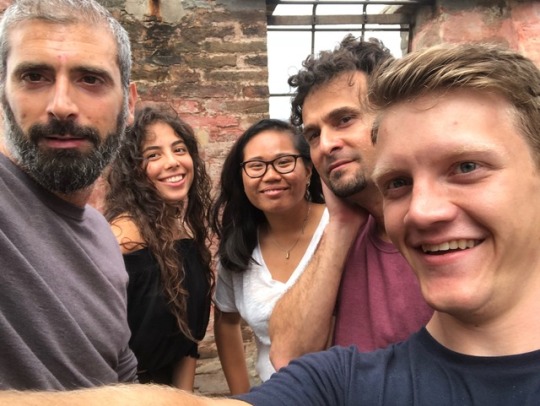
We finally made it to the top👍🏻 #”a-river-dare-chi” -John Cummin
1 note
·
View note
Photo

Working Overtime
So Red Desert it wasn’t exactly my cup of tea (as so far my previous writing fake avid follower who doesn’t exist you must realize by now the types of films I enjoy) however that doesn’t mean that I can’t appreciate something unorthodox or not my ush. It's good to get out of your comfort zones with things like this, the festival and this program forced that a lot, it makes you think differently, educates you, and perhaps introduces you to somethings you may like to further explore.
I tend to be ravenous for knowledge guess its cuz I’m an INTJ but I digress. Red Desert is the only film I’m ashamed to say I’ve seen by Michael Antonioni but it's a very unique film compared to much of what I’ve seen thus far.
I think it's almost the polar opposite of the film we watched yesterday; Amarcord. While that film had many moments of light heartedness, whimsy, but also moments of seriousness this film was wholly serious.
Even the more lighthearted moments, if you could call them that, were deep and asked philosophical questions of the viewer. It saw the director going forward by going backward and embracing Neo-Realist style storytelling.
It chokes the viewer. The world the characters inhabit is our own. The characters live in a highly industrialized world were they can scantily go anywhere without the presence of machines following them. It's a highly oppressive cold world that raises questions related to existentialism and nihilism.
The futility of life. Does anything we do matter or is it we humans who create our own objectives and try to give meaning, where there is in fact, none? Is the main character of the film sick as she claims or is it society itself that is sick - she is but a symptom?
The social problem presented is one that steers clear of areas previously explored in depth by neo-realism but instead Antonioni chooses to focus on another contemporary issue; one still prevalent today, depression.
Depression is treated as a natural outcome of this cold industrialized world. Though the character most affected is the female lead even the Lover admits to being truly unhappy; moving frequently or changing jobs.
The film makes use of color and the film to convey internal feelings that can’t be expressed through dialogue. Changes in lighting, shade, colors. Even the quality of the cinema at times changes from its base to what appears to be super 8 changing the quality of the overall image.
I’d read Antonioni painted several landscapes and shots for the purpose of this film. As the name implies Red is present in many of the shots but not all. He chose to give meaning to the colors and their representation,
All the colors have different meanings to the viewer and the female lead. Gray is utter hopelessness. Red to her is a form of hope however the color shares itself with that of Rust decaying away. Blue is a future not sure of. It all has a purpose and is laid out very intricately by the filmmaker.
The conversations are deep and philosophical. I wouldn’t say anything like a realistic conversation two normal people may have. Its deeper than that, not holding back, asking very tough questions.
Characters show indifference to things that should matter but to them they don’t. Other times they care but it doesn’t matter. They themselves are creating meaning where there is none.
Minor things have implications and things you thought mattered don’t. For such a simple film It’s also a very complex film. Time and time again the film harkens back to the question of meaning. What does this film mean to you? Am I way off base with my analysis? I’d like feedback from others. Afterall it is a very thought provoking film.
-Christopher Purcell Class of 2019
Film Post ¾
Writing from Amsterdam
0 notes
Text
I’d be lying if I didn’t say I'm a little heartbroken to be leaving Italy
1 note
·
View note
Photo

Once Upon a Time in the West - Film Review and Analysis
So I’ve seen this film before to be completely honest. Out of all of Sergio Leone’s Spaghetti Western Films I’ve always considered this his second best after Good, the Bad, and the Ugly. My reasoning being the melancholy of this film, the sound of the harmonica playing repetitively I find annoying (I’ve watched and re-watched this film so much it's actually gotten on my nerves), also the music for me in certain places feels overused, unnecessary, or out of place.
Having said that, for me it is a masterpiece. A masterpiece with perhaps a flaw or two but that's more to personal taste. I truly got so much out of going to Bologna’s Film Festival event where they had a Sergio Leone expert learn me a thing or two about this film, the making of it, behind the scenes info, etc.
I was the only one from Syracuse University, except for Owen Shapiro, to attend this event (student anyway). To be honest it made me love this film even more. Than man who was the expert on this film was from Britain and actually has a book coming out later this year.
Once Upon a Time in the West is actually loosely or wrongly translated as it turns out. What Sergio truly meant was Once Upon a Time there was the West. It was a Swan Song to a genre and Sergio Leones’ last Western.
Ennio Morricone wrote the soundtrack for the film first so instead of the normal way of doing things - the score being done based on the scenes or images the visuals and images were based off the sound. So basically the narrative was based around the music.
Ennio Morricone is one of if not the best film composers of his generation in my humble opinion. Him and Sergio collaborated on many of his films and they helped add soul to his world.
The speaker let us know a few fun facts about the film such that the main lodge was made up of leftover wood from an Orson Welles film. Also he pointed out the many references made to other famous (or little known) Western films or films from other genres. Sergio watched many films dating back to the Great Train Robbery and made a series of references in the film.
Sergio Leone had wanted Henry Fonda for years to play a character in one of his films. Finally he had him and he wanted him to be the villain. Henry Fonda showed up to set with what he though Sergio wanted the stereotypical bad guy - a big ol beard and brown eye contacts.
However Sergio let him know immediately he wanted Henry Fonda as is he wanted the audience to see the man who normally played the heroes as one of the vilest villains in a Western, acting against type, look up at his big blue eyes and say “My God thats Henry Fonda”.
Sergio took into account Neo-Realism and French New Wave and actually adapted aspects of it into the film. He decided to do a deconstruction of many archetypes that made the western famous and the world as it was - an American myth from a bygone era.
So I had a good old time sitting there and listening about a film I already knew a lot about and enjoyed learning some more. This was literally my film as not many of the other students had seen it (ot was obsessed as me with Sergio Leone films).
I have a habit of looking at the faces of the people around me when I re-watch a film I thoroughly enjoyed just so I can either live vicariously through them for the first experience and hope they enjoy it as much as I have.
The viewing was a new experience (never seen it in cinemas) and with the knowledge gained from the earlier talk, and getting to watch people’s first viewing made it that more enjoyable for me.
I thoroughly implore anyone to watch Sergio Leone Films
- Christopher Purcell Class of 2019
2nd Film Post
2 down 2 to go
0 notes
Text
Catholicism in Italy



il 10 luglio 2018 –
I remember when “justgirlywishes” would randomly pop up on my tumblr feed way back when it was a thing and think “same i wanna do that too! GOALS!!” But in all seriousness, backpacking across Europe has definitely been a dream of mine for as long as I can remember, and Italy is a great place to start.
This past weekend, I had the opportunity to visit 4 different cities outside of Bologna: Siena, Venice, Florence and Rome. Due to the limited time we had at each place, we unfortunately could not hit all the places we wanted to visit. However, it was important for us to visit the churches at each place. Italy is known for its historical churches— St. Peter’s Basilica in the Vatican City in Rome, Santa Maria del Fiore Cathedral in the Duomo of Florence, St. Mark’s Basilica in Venice, to name a few. Though religion plays an important part of Italy’s society, the country could not necessarily be labeled as a Catholic Country, given it’s history. One of the things I have found most interesting during my time here is the complex relationship Italy has with the Catholic Church.
The Catholic Church has played a controversial role in Italy’s government, especially its place in education. Later, Catholics became an opponent to rise up against fascism: the Christian Democrats and Communists. Despite their ideological differences, they both came together in resistance to fascist oppression. This unity was portrayed in Roberto Rossellini’s 1945 film Rome Open City; life in Nazi-occupied Rome during World War II. The film is said as the beginning of Italian Neorealist Cinema as most of the scenes are a recreation of actual events that happened in Rome. Rossellini was able to display the sense of unity between the two opposing ideological perspectives. The scene that stuck out to me the most was the execution of the Catholic priest when he was punished for helping the Partisan movement. His defense to the Communist partisan leader costs him his life.
The Catholic Church was also a conflict with politics. The Christian Democrat party monopolized the government for more than 50 years, then eventually collapsed for the Communist party to gain power. Since then the Catholic Church has slowly parted from people’s everyday lives.
This isn’t to say that that Catholicism is irrelevant to Italian’s society, though it does not tie to their attitudes. Religion plays a huge role in many peoples lives as we rely on it to seek purpose.
x jackie
ps:

0 notes
Photo

Suspiria Review & Analysis
So I’ve gotta say I’ve seen thousands of horror films of almost all sub-genres. I’ve always been a huge fan of the horror films of the 70s, 80s, and 90’s since I was really young. I actually rather enjoy the camp factor in some of these older films. I was pleasantly surprised during the film festival by the appearance of an Italian Horror Film I’d heard of through other filmmakers I admire talking about it (Eli Roth, Quentin Tarantino, and Sam Raimi, etc.).
I can confirm many of the things they said about it were completely true. It was an extremely brutal film but at the same time it made even the extreme gore and violence beautiful. The cinematography with the colors which were vivid and set a great tone/mood for the viewing experience added so much.
I’d never seen Italian Horror like this in theatres before; I’d only experienced it through films such as Zombi 2, that I watched on the small screen. The style of older cinema of that era, 1970’s, is what I love most. The colors are often saturated and rich something I enjoy just as it accentuates all the visuals and makes them bolder.
The sound design is that of a low budget 1970s horror film (right up my alley) with a very consistent single theme played throughout the film; obviously at various parts. The soundtrack or the single main theme is extremely iconic; horror films I’d watched previously I realized were paying homage to this film in various ways at the time I didn’t understand.
The acting and voice work is what you would expect of a low budget 1970s horror film - not that great and the synching seems a little off. However for me that adds to the charm - I told you I’m into these sorts of films. They chose to record the film in english (good for me).
I’ve seen so many horror films I feel, at times, I’ve become desensitized or they’re just not that scary anymore. Suspiria did a great job building tension and a sense of dread. I was utterly intrigued.
It even had several surprises in store in terms of plot elements I really didn’t see coming. It was a wholly original plot I haven’t seen replicated; obviously there are similar films that have come out since but none did it this well.
I was truly scared and disturbed at several scenes. They were REALLY REALLY brutal. The director, Dario Argento, ensured the camera stayed on the imagery and didn’t flinch or look away ensuring the audience themselves couldn’t. You were forced to experience every second, empathize, and feel the pain.
The characters were a little shallow or thin. I would’ve liked a little more substance - but what do you expect from a low budget 1970s horror film? The characters were all serviceable some stuck out more than others. The threat of the villain felt ever prevalent even if they themselves weren’t really characterized outside of minor dialogue.
They did an excellent job with creature design, set design, cinematography, and sound design. Obviously they were limited by budget and the tech of their time but that adds to the charm for me. It makes me nostalgic for a long gone era I never got to experience. I felt there was a less is more approach (until there was more for those big scenes then it was more is more).
The film truly is a horror masterpiece. They’re gonna do a remake pretty soon, which I’m wary of, but hopefully it will do justice to the original. Everything I’d heard about this film was true (including the controversy of making brutality beautiful) but it was so much more. I highly recommend you experience it for yourself. It offers a fresh perspective on horror compared to the modern day dime a dozen horror films. This is a unique offering in which great care went into composing and framing every scene. 10/10 would watch again (I still listen to the soundtrack sometimes).
- Christopher Purcell Class of 2019
Technically my first long post that is film centric
Previews of Future Posts I plan to do: Film Festival and Program Overview, Once Upon a Time in the West, Red Desert
0 notes
Video
During Jackie, Erin, Chris, and I’s excursion across Italy, we came across one consistent thing no matter which city we encountered: Beautiful Churches. Whether or not you practice the religion that they exemplify or if you are religious at all, the marriage of architecture and sculptures says a lot regarding how hard work and brilliant minds can make something with such magnitude. Saint Peter’s Basilica in particular was mesmerizing. The aspect that resonated with me the most was that there was sculptures in every corner, pillar, wall, ceiling, etc. down to the tiniest micro-detail. Almost no stone in the 240,000 square foot church was missing some kind of carved religious saint or painted story of a holy text. The stories that these carvings told also had no linear pattern, it was a collage of holy stories/people of the Bible. In addition to being the headquarters of the Catholic Church, (to me) it was a celebration of the history of Catholicism. Each “image” of the history was like a page out of a graphic novel. It’s one thing to read a story in a holy text, but as a visual storyteller I really appreciated how these stories were brought to life for millions of people to see, especially for those who might not be as familiar with any of the stories or th saints. And of course the religion itself is just as (if not much more) important than the visual way that it is portrayed, but I don’t think as many people would come in such numbers if there was not a monumental spectacle part of the experience. It is healthy for storytellers exploring new cultures to look at how different mediums have succeeded in keeping stories alive. When crafting a painting or a sculpture for a church like this, the ancient architects did not have to worry about things such as ISO, F-stops, changing lenses, etc. It IS, however about “getting the shot,” or in their case, doing the story/art justice. About a week ago Alex Mendez told me something on Rimini beach that I didn’t connect to until I saw the vast masterpieces of the churches: “It’s not about theory, it’s not about knowing the best technical way to do this or that, it’s not about any of that. It’s about feeling the moment, actually letting the waves crash down on you as the sea gulls chirp and watching someone build a sand castle by the shore. Looking around you and learning how simultaneously frame that complicated experience into a shot is what we are here for. Turn your experience into a story” (I’m paraphrasing of course, but that was the core of the idea). When looking at the Basilica and seeing paintings/giant statues/columns, and standing on a multicolored marble carved floor, and feeling the calm silence of wonder as each person looked around, I realized that that was an experience that was so powerful that I knew that I needed to attempt to put that “frame” into a narrative someday someday. I’m going to hold onto that moment of wonder, because you can’t be inspired unless you keep your eyes open. One day, that experience will find you if you let it.
-John Cummin
0 notes

